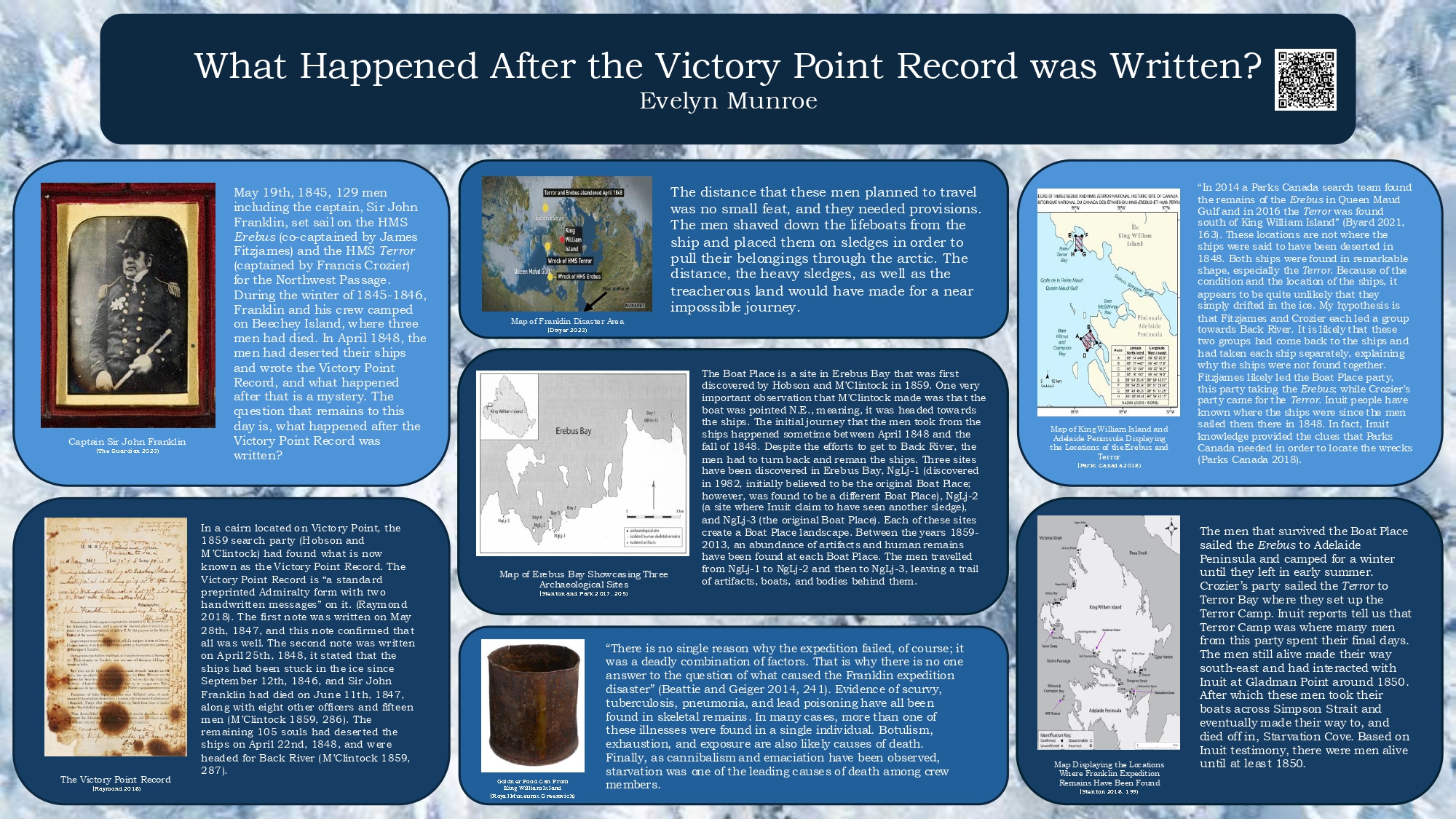Evelyn Munroe

Poster Subject: Historical Archaeology
Poster Title: What Happened After the Victory Point Record was Written?
Bio: Evelyn is a first-year MA student in Archaeology, with a BA in Anthropology and English. Her research focuses on a sixteenth-century ceramic assemblage from Ferryland, NL, belonging to migratory European fishers before the English settled in 1621. The primary goal is to create a typology of these ceramics and determine their provenance. She also hopes this study will shed light on the provisioning of fishing crews and the daily lives of migratory fishers in the sixteenth century.
Abstract: Over the years, the haunting mystery of the Franklin Expedition has caught the eye of many, and still, almost two centuries later, the fate of the expedition remains unknown. On May 19th, 1845, 129 men including the captain, Sir John Franklin, set sail on the HMS Erebus and the HMS Terror in order to complete the Northwest Passage. The expedition headed into the arctic and never came home. In 1859 the first evidence of what happened to the expedition was unturned, this artifact is now known as the Victory Point Record. The Victory Point Record provides insight on the days leading up until the men deserted the ships; however, what happened after that is a mystery. For years archaeologists have been trying to figure out what happened after the Victory Point Record was written. This research paper uses Inuit testimony, archaeological findings, skeletal remains, and other historical information, to determine what occurred after April 1848, as well as how long Franklin’s men managed to survive after deserting the ships. Research suggests that the men had deserted the ships in April 1848, and after facing many difficulties they remanned the ships by the fall of 1848. Once the ships were remanned, they were able to sail the ships to the locations in which we see them today. From their new locations, the men camped for a winter on and near the ships until they deserted them once again in the spring/summer of 1849, until eventually the remaining crew members perished by 1850. Franklin’s men suffered greatly in their final days, or years in some cases, due to the harsh climate, illnesses, and starvation. Because of the Inuit testimony and archaeological findings studied in this paper, it becomes evident that Franklin’s men died off over the course of two years during their journey along the coast of King William Island. Despite the horrific predicament that the men were in, some of them managed to survive in the arctic until 1850 when the last of the expedition died in Starvation Cove.
Corresponding Author's Email: eimunroe@mun.ca